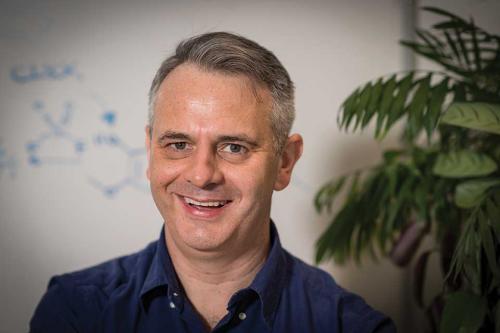At first glance, they look fairly non-descript, but Moses has a knack for taking low-value natural products and transforming them into something remarkable – in this case, an anticancer compound in just nine synthetic steps.
Moses is a chemist who specialises in identifying alternative routes to molecules that optimise pharmaceutical yield and effectiveness. This kind of work is critical to the drug pipeline and, most importantly, to the patients dependent on life-saving medications that may otherwise be difficult and expensive to make.
‘Chemists play a key role in the pharmaceutical process’, he says. ‘We design molecules, synthesise them, screen them, find lead hits, and refine processes to cut down production costs. We create a recipe of sorts, where simplicity and function are critical to success. The less steps involved and the simpler the chemistry, the more cost-effective the product will be.’
Moses has recently used an extract from Voacanga africana seeds, an alkaloid that is inexpensive and with no significant biological properties, to synthesise a powerful anticancer compound. Using a biomimetic strategy inspired by nature, the synthesis all happens efficiently and inexpensively in nine steps.
‘Often, total syntheses of complex compounds can take multiple steps, often more than 15, and this can reduce the overall synthetic yield’, he says.
‘We have taken a compound from inexpensive, benign seeds with no known or significant biological activity, and performed a series of robust chemical transformations to create a potent anticancer compound that will pave the way for new biological investigations. Not only is our compound active, but it has a 30% overall yield, which is significant.’
If it ticks all the boxes in terms of pharmacokinetics, there’s the possibility it could one day be taken forward to advanced trials.
Future work will involve tweaking the compound to modify and improve its function.
‘Function is what I really care about’, says Moses, ‘but part of that focus is also about up-value. We take a handful of seeds, or some other natural source and turn them into something of considerable value. Combine that with the principles of click chemistry, and we can perhaps help to optimise the drug pipeline to get pharmaceutical outcomes that are quick, simple and cost effective.’




